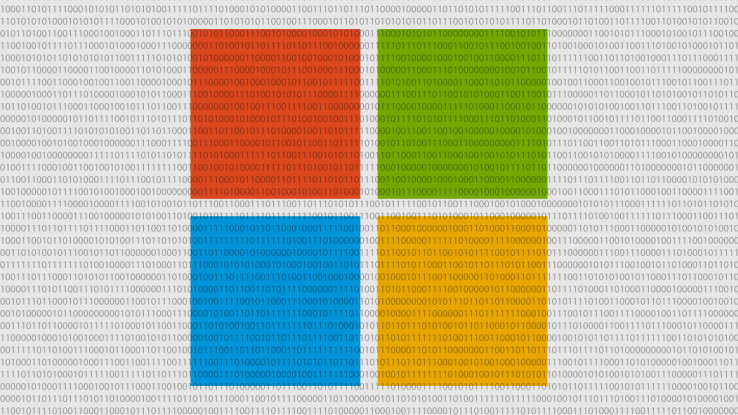 Microsoft reported its fiscal second-quarter financial performance today,
laid out its forecasts for its future performance and took questions
from a number of analyst. It was a flurry of data, so let’s take a
moment and dig through the big points that matter.
Microsoft reported its fiscal second-quarter financial performance today,
laid out its forecasts for its future performance and took questions
from a number of analyst. It was a flurry of data, so let’s take a
moment and dig through the big points that matter.The Bigger Picture
Microsoft met the street’s financial expectations: The company’s $26.5 billion in revenue and $0.71 in earnings per share were in-line. Its profit declined from the year-ago period, but that was expected due to prior one-time benefits, and the current fiscally deleterious impact of the company’s phone assets that didn’t exist in the year-ago quarter.The company is down more than 4 percent in after-hours trading, drifting down further as time has passed. The company’s earnings call, which can sometimes reassure investors, did not. That’s likely due to the fact that Microsoft indicated on the call that it now expects to grow a mere 4 or 5 percent during its current fiscal year.
What is driving that limp growth? The company cited that it expects 4 points of revenue drag due to foreign-exchange-related issues alone moving forward. That, coupled with macro conditions that are weak in some markets, including Japan, and the prior impact of the XP end-of-life bump that has ended, are causing Microsoft’s top-line expansion to slow.
So was it all bad? Not at all. Microsoft’s hardware had a good quarter.
Hardware
Hardware had what was generally its best quarter for Microsoft yet — Surface had record revenue, and a record number of Lumia Windows Phone handsets shipped. Phone revenue fell on a sequential quarter basis to $2.3 billion from $2.6 billion. Surface revenue grew on a sequential basis to $1.1 billion, from just over $900 million the preceding quarter.But those growth rates on a sequential quarter basis are only so large, and they include the traditional calendar fourth-quarter sales bump. I say that to put a touch of caution into your mental model going forward.
Microsoft noted on its call that the Surface Pro 3 is currently outselling its predecessor, the Surface Pro 2, by a factor of 3 to 1.
The company also shared that it has yanked $1 billion in cost out of phone, as promised. That should lower short-term earnings pressure from the group. The company promised more savings in time.
Xbox managed to get 6.6 million consoles out, down from the year-ago quarter, and Microsoft didn’t break down how many Xbox One devices were sold in that figure. The company did note that the Xbox One was the best-selling console in the United States during the holidays.
Cloud
Consumer Office 365 revenues, search advertising revenue, and commercial cloud all had decent quarters.
Commercial cloud revenue notched what Microsoft described on the call as its sixth consecutive quarter of three-figure growth, meaning that every quarter in the last six has seen that revenue category more than double from its year-ago total. The law of large numbers will make the streak an increasingly difficult challenge.
Commercial cloud revenue is now on a $5.5 billion run rate, up $1.1 billion in two quarters. That, stacked with the billion from Consumer Office 365, makes Microsoft’s cloud top-line a nearly $7 billion business for the company, depending greatly on how you measure, of course.
Finally in the cloud category, Bing grew its advertising revenues 23 percent from the year prior.
Windows
Windows had a difficult quarter, due in part to the fact that its year-ago period had a number of sweeteners and lucky boosts. Windows XP lost support, and some Windows 8 revenues that had been accreted and stored became material. Try and beat that without help.Microsoft noted that it now has more than 2 million people testing its Windows 10 operating system, up from 1.7 million 5 days ago.
In response to a question concerning how cheaper and free versions of Windows will be monetized, Microsoft CEO Satya Nadella explained on the company’s call that it would depend on a mix of services revenue, and sales — the Windows Store, Bing, Xbox Live, and so forth.
The company also noted that it allowed for lower revenue per Windows license for low-cost devices on purpose. This had the effect, according to CFO Amy Hood, of driving “meaningful platform growth.”
More devices sold now means more devices that will upgrade to Windows 10 for free, thus creating a better user pool for developers to sell into.
Microsoft noted that it expects the forex issues it is dealing with, stemming from the strengthening dollar, and the macroeconomic drag that it is experiencing will persist for the rest of its fiscal year. That implies that other multinational technology firms could see clipped growth rates in dollars, if not unit terms, this year, either fiscal or calendar.
Summing all the above, the company’s cloud push is still putting points on the board, as are its hardware projects. So the “devices and services” bit is still in play. But with limited growth projected, a seasonal downturn in device sales likely in the current quarter, and falling “transactional” Office revenues which are better offset in the long-term by recurring SaaS Office fees, Microsoft will have to bust hump to meet street expectations for the next few quarters.